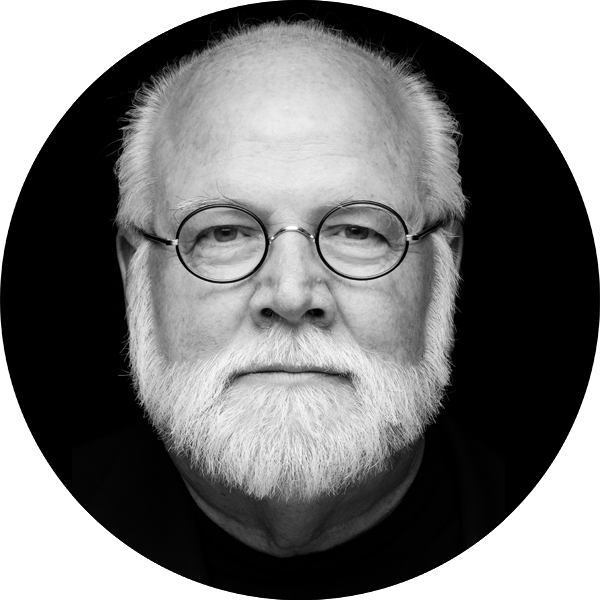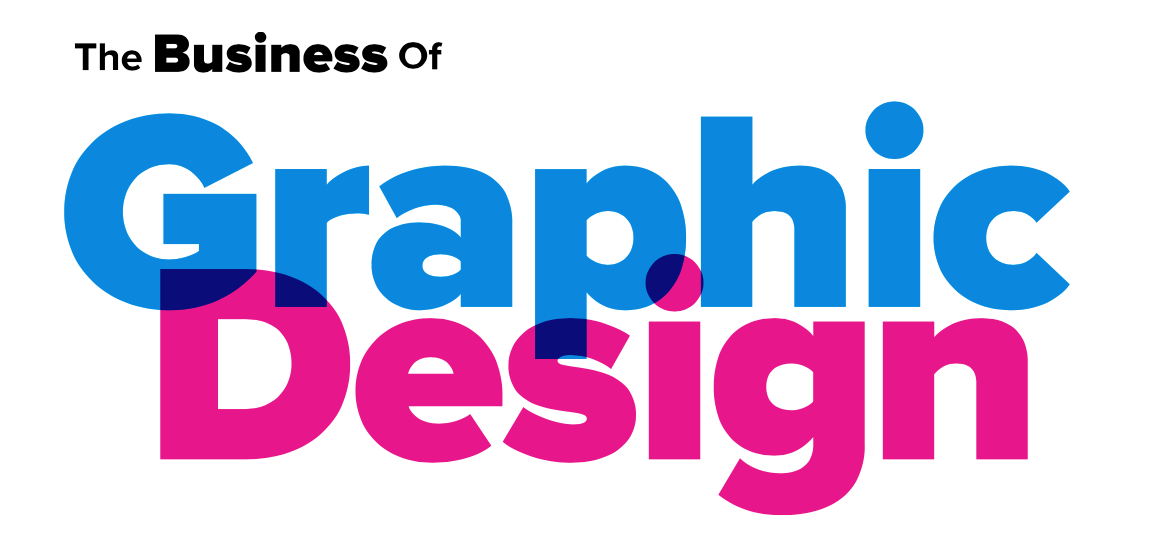
Interview With
Kit Hinrichs was a partner at Pentagram at their San Francisco office from 1986 through 2009 and is currently principal at Studio Henrichs. He is a recipient of the prestigious AIGA medal and his work is included in the permanent collections of the Museum of Modern Art, New York, the San Francisco Museum of Modern Art and the Library of Congress. He is co-author of four books, including Typewise, Long May She Wave, 100 American Flag Icons and The Pentagram Papers.

Since graduating from Art Center College of Design in Los Angeles in 1963, I’ve worked in graphic design continuously, first in New York City for 13 years and then in San Francisco. After a couple of jobs in Manhattan, I either had my own studio or was in a partnership. Some of my partners included Tony Russell, Vance Jonson, Marty Pedersen, my wife, Linda, Neil Shakery, and for 23 years, the partners of Pentagram. When I turned 68 in 2009, I left Pentagram to open Studio Hinrichs. The studio is currently in the San Francisco Presidio, which was first established as a military base by Spain in 1776, and our studio is in the oldest building in the Presidio, which is now a national park. It’s a beautiful setting, so different from working downtown.
When I review my work over the decades, I see that consciously or unconsciously my overriding motivation has been to use design as a narrative device to tell the story. My approach is not decorative or abstract; I try to make design narrative to draw people’s attention to the essence of the story, clarify and elaborate on the subject to enhance understanding, and represent my client’s point-of-view in a compelling and inviting manner.
Clients often ask designers for a “ten step” formula that will guarantee success in their communications. But, design is a not a linear process. Designers on a whole don’t look for pat, safe, risk-free, pre-tested solutions to their client’s problems. For a company in this crowded, competitive business environment, safety is the riskiest approach. If you’re not swimming forward, you’re sinking.

I’m not one to take a formulaic approach to design. I don’t believe in following a generic checklist and crossing each item off as the job proceeds, holding multiple boardroom meetings to discuss brand integrity, and testing every detail with focus groups. Not every job needs extensive research. Sometimes the overanalyzed solution will seem so tired, ordinary and expected that you lose sight of the goal, to excite and engage your audience. My sense is that sometimes you need to take a little leap of faith and do things the way your gut tells you they need to be done. Because an idea brought forward from an experienced designer that has not been tested from all angles, doesn’t mean it is not correct.
We have also worked with some clients who come in with clear business goals. Their benchmarks have been pretty well defined. They know where they are and they know where they want to be at some point in the future. With that information, a designer can help them achieve their goals and cement a long-term relationship with a client.
Designers bring different perspectives and insights to corporate communication problems. Clients may have a clear understanding of what they hope to accomplish but they can only articulate it in words and Power Point charts. They aren’t thinking visually, whereas designers hear differently, and the solution that pops into their head in often visual. Listening to the problem, I might ask “have you tried this?” and the client may exclaim “My God! I never thought about it like that!” It may seem ground breaking to them, but it’s just how designers process information. This look at a business problem from a different perspective which adds value by visualizing the message they want to convey. I have found that the role of design is to make the complex, simple; the opaque, transparent; the unstructured, concrete; the obtuse, accessible; the obvious, exciting, and the ordinary, beautiful.
The way I see it, graphic designers aren’t artists in the truest sense of the word, we’re communicators first. We’re not simply making ourselves happy by doing something artistic, we’re actually solving a problem for somebody else through design. I don’t have a problem with that. It’s actually the most intellectually challenging and the most interesting part of our job. Design solutions require a very different kind of thinking than traditional business analytical solutions. Still, I’m convinced that the riskiest thing a designer can do is to play it safe all the time. If you don’t take some risks, like our clients, ‘you’re not swimming forward, you’re sinking.’
“My sense is that sometimes you need to take a little leap of faith and do things the way your gut tells you they need to be done. Because an idea brought forward from an experienced designer that has not been tested from all angles, doesn’t mean it is not correct.”
When young design graduates ask for my advice on what to do when they enter the profession, I tell them not to go it alone at first. You likely haven’t acquired enough “on the ground” experience to handle the different situations you may encounter. To learn the practical nitty-gritty of working as a designer, try to find a job in a place that has experienced designers and a reputation for doing really good work. Find a couple of good, strong mentors and learn from their experience. Win a couple of awards, fail a few times and then when you are ready, break away and open your first office.
Personally, I think it’s better if you have a partner; it doesn’t have to be a design partner. It can be a business partner, writer, or someone in an allied field. If the name of the firm happens to be something like “Jones and Associates” there’s an implied sense of a larger, more stable business. Most clients like a bit of a safety factor when hiring a new designer because they usually prefer to work with a firm rather than a freelancer.

In my opinion, a staff of five or six designers is a perfect size for a studio. When the workload increases and you expand your staff to a dozen or more employees, the firm’s principal has to spend a lot of time on administrative tasks and on being the – “sales guy.” That takes you away from doing what you love most and are often best at – design. Studios of fifteen or twenty professionals are a whole different thing. It gives you the resources to attract and pay talented, skilled designers to do the work, including people who can help manage the finances and marketing of the company.
The longest period in my career with a single relationship was my twenty-three years as a partner in international consultancy Pentagram, and as the graphic partner of Pentagram’s San Francisco office. What’s unique about Pentagram is that you have to be invited to become a partner, you can’t apply for the job. Candidates are chosen because they have developed a strong reputation on their own and have accumulated a respected body of award-winning work. They have also demonstrated the ability to run a successful business.
In 1985, when Pentagram approached me about becoming a partner, I was running a successful bi-coastal studio called Jonson, Pedersen, Hinrichs and Shakery. I had followed Pentagram for many years and admired how their work was strong on concept, always well produced and smart. I thought, “How could I not want to be part of a team like that?” So it took me and my other San Francisco partners, my wife Linda and Neil Shakery, about thirty seconds to say, “Yes, let’s do it!”.
Linda Hill, of Harvard Business School, chose to feature Pentagram in one of its twelve case studies on what successful businesses have in common in its book “Collective Genius.” Pentagram was the only design firm selected; other case studies focused on traditional businesses. In reading the various case studies, I was struck by how Pentagram shared the same business practices of other businesses, but did a lot of things that other design firms didn’t. From the start, Pentagram’s culture mandated that every partner is equal. Although within the firm, each partner is expected to run his/her own design team and must secure and manage his own projects, although some jobs lend themselves to collaboration between partners, most did not. No partner is considered more important than the others, no matter how long they had been with Pentagram or how much money they brought in. Every partner within the same office shares the profits equally. And even though every Pentagram office around the world may be slightly different, as far as the financial structure is concerned, they are virtually all the same. But every partner must carry his own weight financially and in terms of quality output. Another important criteria is that the partner must be someone you’d “want to have dinner with.” The real collegial aspect of Pentagram is one of the most important reasons why it has been so successful. The culture is very generous in spirit.
The Pentagram model has worked well for nearly 50 years. Even though Pentagram has grown into a large international organization, the work is still done by teams of three to eight people. Pentagram is actually a collection of small highly talented businesses working together for the benefit of all. This model also gave each partner the advantage that a large company has by pooling its funds. At Pentagram, we could undertake noteworthy promotional projects such as the Pentagram Papers and books about the firm. Plus, the partners held semi-annual meetings in various parts of the world. Pooled resources gave individual partners global exposure. Basically the Pentagram model always allows you the opportunity to work side-by-side with the best talent in the field, your partners.
“The Pentagram model has worked well for nearly 50 years. Even though Pentagram has grown into a large international organization, the work is still done by teams of three to eight people. Pentagram is actually a collection of small highly talented businesses working together for the benefit of all.”
I enjoyed being part of Pentagram, but after twenty-three years, there came a day when I realized that my time at Pentagram had probably run its course. I had reached an age where I was no longer into “empire” building. I was the solo partner in San Francisco and maintaining my financial contribution to the group was more than I wanted to take on at the time. I could still attract new business, but I wanted to choose the kinds of business that I would find most satisfying and rewarding. As I entered my seventies, I knew that if I was ever going to get back to doing meaningful work that was my own, I needed to get back to working on my own.
Most of the team I had at Pentagram came with me, as did ninety percent of my clients. The difference now is that I’m running more of a regional consultancy with a small team of staff designers augmented by senior designers contracted to work on specific assignments. They work with me on overflow projects. This is how we expand and contract the business as necessary, while keeping a small core staff.
I realized that I would get fewer large scale commercial jobs than I did at Pentagram, but that gave me the freedom to devote more time to personal projects that relate to design. As many people know, I’m passionate about typography in all forms and about raising awareness of the unique beauty of individual letterforms and complete typefaces. I believe typography is under-appreciated because people often focus on only reading the text, and are unaware of the beauty and power typography brings to the words.
Beginning at Pentagram and continued at Studio Hinrichs, we publish the “365 Typography Calendar”, showcasing twelve individual faces each year. The calendar has attracted a growing following and is now sold through museums, specialty art stores, directly to the consumer through Amazon, and on our own website. When we started producing the calendar about 16 years ago, we knew that every day the average person chooses a typeface to use on his/her computer. So we asked ourselves “Why don’t we educate them about typography? What was the origin of that typeface? What country did it come from? What was the technology used to create the original form? Who were and are the type designers?” All the things that bring understanding to a typeface.
An interesting aspect of these self-generated projects is that it makes me both the designer and the client. When it’s your own money, you are keenly aware that you need to market to retailers around the country, you have to sell it online, you have to design it so that it can be read and understood online, as well as at the point-of-sale. It’s a challenging part of the business that has made me a better, more thoughtful designer.
Going out on my own has also given me the luxury of paying more attention to another personal passion – my Stars & Stripes collection. This all started when I inherited a family heirloom — a flag that my great, great, great aunt had sewn in 1865. The flag used to be kept in a box under my parents’ bed. When I move from Los Angeles to New York, Jasper Johns was making a splash with the inspirational flag artwork he was creating. That encouraged me to frame the family flag and use it as a graphic in our home. During my frequent forays at antique and collectible fairs, I found myself picking up more flag memorabilia, unconsciously building a sizable collection. Now I have over five thousand flag objects of all kinds including Navajo weavings, belt buckles, children’s toys, posters, quilts, anything that might include a predominant image of an American flag on it. Those flags have not only been a joy for me to collect, but they’ve also led to some interesting professional assignments, including designing flag-themed covers for the Land’s End catalog, and the design of a flag quilt for its summer book. I’ve done about thirty or forty jobs that incorporate variations on the themes of what flags are all about, and there are some people who know me only as an American flag collector, and not a designer. My collection has also led to a touring exhibition of my flag memorabilia, an appearance on the Martha Stewart show, and invitations to lecture as a designer on the history and design of the flag.

One of the best things I can teach students and any new designers that come to work in my office, is how to work with clients. I don’t have a magic bullet here, but there’s no doubt that you must listen to them. They are your primary source of information. You don’t have to always agree with them, but you do need to listen to them, and you do need to earn their trust so that you can build the kind of rapport with them that allows them to ultimately, listen to you. That’s such an important part of the process. You can’t go in saying, “Dammit! Do what I say! I’m the designer and you’re not.” Understand from day one that you certainly don’t know their business better than they do, but, if you take the time to learn about their business and what’s important to them, and what makes their business more effective, and what their competitors are doing, then you become a very valuable asset to their team and they will stay with you. At the same time, you also educate them to be better clients, which ultimately makes them better buyers of design. Win, win!
Always remember that graphic design is a multifaceted business that puts together a collection of the best, most talented individuals possible to solve a problem. The role of the designer often is similar to that of a movie director. It may be your overall vision, but you can’t pull it off without assembling a team of uniquely creative, experienced people to help execute that vision. I’d advise you to listen to what they have to say as well, and see if they can suggest another option that might make the process more effective and provide a better solution.
I’m often asked about design inspiration. I always reflect on artist Chuck Close’s adage, “Inspiration is for amateurs, the rest of us just show up and get to work.” Although I generally agree with the simple wisdom of the statement, I’m reminded that what keeps me fresh in discovering new ways to explore creative solutions, is my ability to see opportunities when they appear, and always to be open to act upon those opportunities at the moment they occur.
No matter the project, stay focused on solving the problem for your client and doing the best work you can do at any particular time. It’s an old cliché, but you really are only as good as your last job. Stay relevant. If you don’t continue to maintain a strong, effective level of work, you may end up with a quite different and far less respected reputation.
If I have any regrets in my design career it’s that I won’t have another 50 years to continue doing what I do today on this ever expanding, intellectually engaging, and personally fulfilling life’s work. I wish my best to the next generation of designers.



